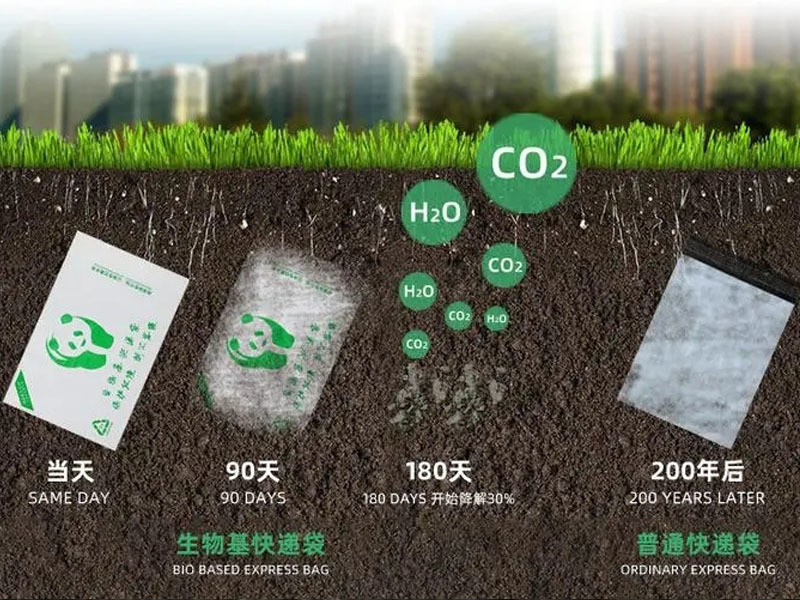What is the difference between fully degradable plastic bags and pseudo degradable plastic bags?
Published on: 2023-01-15 00:01:00

Biodegradable plastic shopping bags refer to bag products made mainly from biodegradable resins, with carrying structures, and used for storing and carrying goods in sales, service, and other places. Biodegradable plastic shopping bags can be divided into biodegradable plastic shopping bags for direct contact with food and biodegradable plastic shopping bags for non food contact, depending on whether they come into contact with food or not.

The commonly used biodegradable plastics currently include polylactic acid (PLA), polycaprolactone (PCL), polybutylene succinate (PBS), polyhydroxybutyrate (PHB), polycarbonate (PPC), and polybutylene terephthalate adipate (PBAT).
Current Status of Biodegradable Plastic Shopping Bags
According to the national policy on plastic pollution control, non degradable plastic shopping bags belong to the list of plastic products prohibited by the country, and degradable plastic shopping bags are one of their substitute products. However, through this sampling, it was found that the current usage status of biodegradable plastic shopping bags is not optimistic. The basic situation is as follows:
The price cost is relatively high. The price of biodegradable plastic shopping bags is mostly between 0.6-1.2 yuan per piece, which is twice the price compared to ordinary plastic shopping bags. Mainly due to the high cost of biodegradable plastic raw materials, the current selling price of PLA raw materials is 15000-30000 yuan/ton, PBAT raw materials is 14000-25000 yuan/ton, and PE raw materials is only 8000-10000 yuan/ton.
2. Poor consumer performance. The material of biodegradable plastic shopping bags is too soft, and there are problems with poor performance such as easy breakage of the handle and easy damage to the bag body.
Most production enterprises are in the early stages of transformation. Many plastic shopping bag manufacturers have transitioned to producing biodegradable plastics. However, due to the difference in material compared to traditional plastics, enterprises need to adjust their processing technology and production formulas to meet both biodegradable performance and the performance and hygiene requirements specified in product standards (plastic products for food contact). In the early stages of transformation, new products developed by enterprises may not meet the standard requirements.







